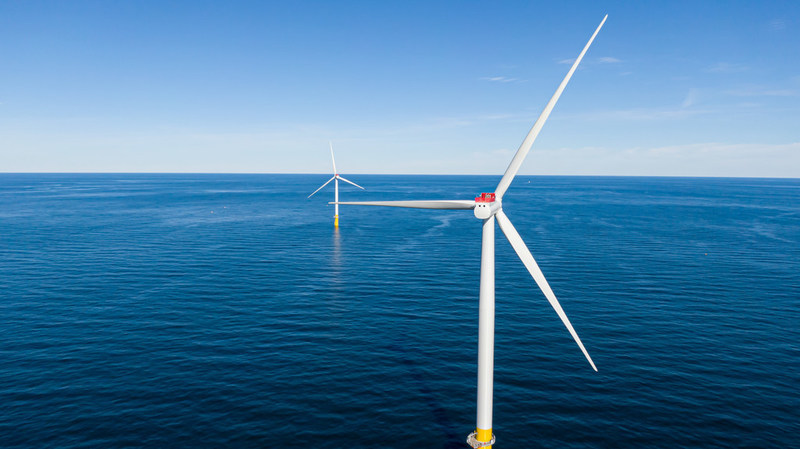Dominion Energy Virginia has submitted its 2024 Integrated Resource Plan (IRP) to the Virginia State Corporation Commission (SCC) and the North Carolina Utilities Commission (NCUC), detailing various strategies to meet increasing power demands, including the addition of offshore wind energy.
The IRP is informed by a PJM forecast, which anticipates a 5.5% annual power demand growth in Dominion’s delivery zone over the next decade, potentially doubling by 2039.
This plan is a strategic framework rather than a direct proposal for specific projects, based on existing technology, market dynamics, and demand projections.
Dominion Energy aims for 80% of its new power generation over the next 15 years to be carbon-free.
This includes 3,400 MW of offshore wind capacity, complementing the ongoing 2,600 MW Coastal Virginia Offshore Wind (CVOW) project. The CVOW project will deploy 176 Siemens Gamesa 14 MW turbines, making it the largest US offshore wind farm when operational.
The plan also proposes 12,000 MW of solar energy, 4,500 MW of battery storage, and introduces small modular nuclear reactors starting in the mid-2030s.
Approximately 20% of the plan’s power generation will come from natural gas, ensuring reliable backup power when wind and solar resources are limited, according to Dominion Energy.
“We are experiencing the largest growth in power demand since the years following World War II. No single energy source, grid solution or energy efficiency program will reliably serve the growing needs of our customers. We need an ‘all-of-the-above’ approach, and we are developing innovative solutions to ensure we deliver for our customers,” said Ed Baine, President of Dominion Energy Virginia.
In August, Virginia Electric and Power Co., a Dominion Energy subsidiary, secured a lease area in the Central Atlantic offshore wind auction in the US with a bid of approximately USD 17.7 million (EUR 16 million). This area, spanning 176,505 acres (around 714 square kilometers), is situated about 35 nautical miles (almost 65 kilometers) from Chesapeake Bay’s entrance.
In July, Iberdrola agreed to sell Dominion’s subsidiary the Kitty Hawk North Wind offshore wind lease area. The site, located about 40 kilometers north of the CVOW project, will be renamed CVOW-South, pending regulatory approval.
Original Story at www.offshorewind.biz
